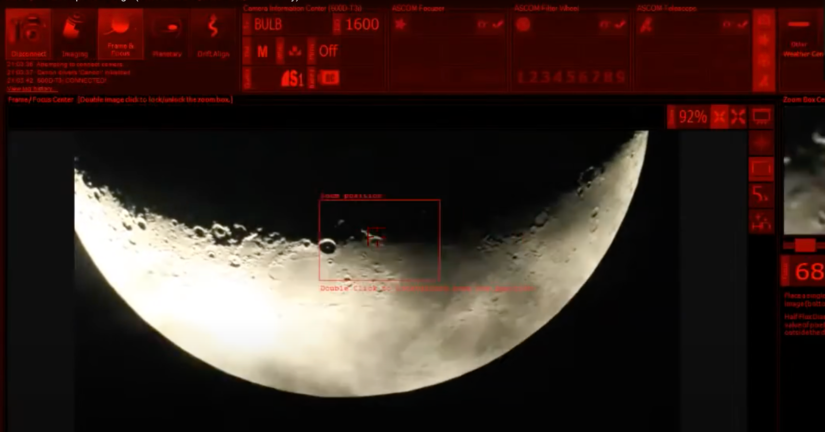WALL STREET JOURNAL -- It's too hot to bake yet another peach pie and too late in the season to start a victory garden, but it is a prime time to ponder the night sky. More than 60 places around the country have been designated as exemplary stargazing sites by the International Dark-Sky Association, which is not, as the name suggests, the
bureaucratic arm of the League of Villains, but a conservation organization devoted to reducing light pollution. Not only do these Dark Sky sites provide a high-def upgrade to backyard stargazing, but, since they’re often in fairly remote locales, they’re also conducive to social distancing. For those who’d rather stay in their own orbit, several Dark Sky sites offer up a hefty menu of virtual astronomy programs.
Like many conservation movements, the notion of preserving night skies took off in the 1970s, fueled by amateur astronomers concerned about excessive urban light. In 1988, the International Dark-Sky Association (IDA) was incorporated in Tucson, Ariz., by founders David Crawford, a professional astronomer. and Tim Hunter, a physician/amateur astronomer. IDA now represents 145 destinations in 21 countries.
Smokey Jack Observatory is housed in a barn with a retractable roof
Five types of Dark Sky designations exist, each with its own set of criteria: International Dark Sky Communities, Parks, Reserves, Sanctuaries and Urban Night Sky Places. You can find the sites in every corner of the country, so you needn’t drive far to access one. DIY activities like firefly spotting and moonrise picnics appeal to both amateur astronomers and romantics in search of a little cosmic recreation. But the sites also offer Coronavirus-era activities for family and friend bubbles seeking starry solitude.
Here, a sampling of five Dark Sky sites in the U.S.; you can check IDA’s map at darksky.org to find the places closest to you.
Big and Bright in Texas
The Lone Star State is home to 15 official Dark Sky places, including Big Bend National Park and neighboring Big Bend Ranch State Park, both at a far enough remove from city life to promise a million-plus acres of protected night sky. While some programming is on hiatus due to coronavirus regulations, you can still hire
private guides at the visitors center for astronomy walks, a chance to spot three of the Southern Cross’s four stars. Two hours away, the McDonald Observatory live-streams its telescope-viewing programs on YouTube, using its powerful telescope to give virtual visitors a glimpse of the skies above West Texas’s Davis Mountains.
Colorado’s Star Power
Westcliffe and Silver Cliff, about 2.5 hours south of Denver in the Wet Mountain Valley, together make up Colorado’s first designated International Dark-Sky Association Community. Local residents adopt stringent outdoor lighting ordinances. The result: reliably glittery skies crowning the Sangre de Cristo Mountains. The site’s iconic Smokey Jack Observatory, housed in a barn with a retractable roof, no longer hosts its usual star parties but Dark Skies Colorado posts images and videos on the group’s Facebook page several time a week.
Pennsylvania’s Space Station
The Milky Way is so bright at Cherry Springs State Park (pictured below), in north central Pennsylvania, that rangers say it casts a shadow. The park—about a five-hour drive from the city glows of New York City, Washington, D.C., and Philadelphia—is considered to have the darkest skies in the east. According to IDA, those skies typically turn out 60 to 85 clear nights a year, which makes for crystal-clear ogling of constellations and galaxies like Andromeda. From September to March, you might catch a peek at the Aurora Borealis. North Star Outdoor Guides offer private tours to help you spot meteor showers (wildasaphoutfitters.com). Or you can opt for a nightscape photo workshop (pbase.com/cwphoto). Serious astronomers will appreciate the Overnight Astronomy Observation Field, which prohibits campfires and all forms of white light, but there’s another campsite with picnic tables and fire pits. Stuck at home? Starting Aug. 21, the park’s website will post night-sky walking tours.
Luminescent Skies and Seas in Florida
Big Cypress National Preserve, recognized by IDA in 2016, is located in the Everglades, about an hour west of Fort Lauderdale. Ranger-led programs aren’t scheduled again until December and the campgrounds are closed due to coronavirus restrictions, but naked eye views of constellations, planets and mysteriously dimming stars like Betelgeuse continue to lure solo and small group astro-enthusiasts. And sixth-generation Glades-man, Captain Steve offers private stargazing and campfire tours in his everglades Swampbuggy. What’s more, green flash sunsets are common in South Florida, and ocean bioluminescence here peaks from June to September when microscopic dinoflagellates glow turquoise. Homebound star-gazers can join the Saturday night “observing sessions” via Zoom with the South Florida Amateur Astronomy Association, hosted by Fox Astronomical Observatory.
Cosmic California
Sandwiched between San Diego and the Salton Sea, Anza-Borrego Desert State Park offers all the beauty of a California desert without the crowds at Joshua Tree and Palm Springs. The regular stargazing meet-ups and private night tours are on hiatus, but you can still stake out spot—you’ll find a map of the area’s best stargazing sits at abdnha.org. Or, from home, view a recording of the University of California Riverside’s video feed to see any number of celestial objects. This month try take a gander at the Perseid Meteor Shower, which peaked August 12 but is active through Aug 26th. And if you miss that, mark your calendar for Halloween, when the ultra rare Blue Moon makes an appearance.
Watch the first UC Riverside astronomy department virtual Star Party recording here.
Read the original article and view more images here:
